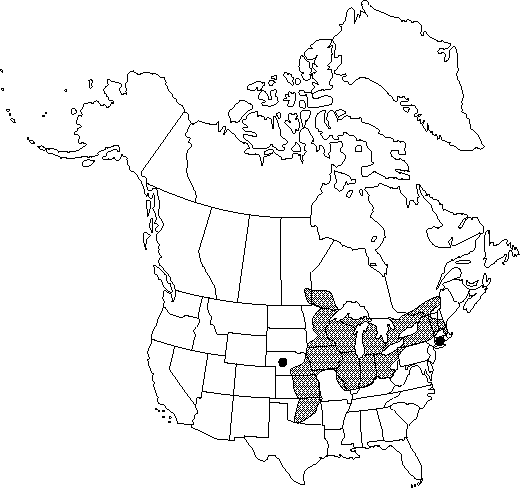Nymphaea odorata subsp. tuberosa
Rhodora 96: 170. 1994.
Rhizomes often constricted at branch joints to form detachable tubers. Leaves: petiole green with brown-purple stripes, stout. Leaf-blade abaxially green or faintly purple. Flowers: petals white, rarely pink, elliptic to oblanceolate, outer usually with broadly rounded apex. Seeds mostly 2.8-4.5 mm.
Phenology: Flowering late spring–summer.
Habitat: Mainly alkaline ponds, lakes, and sluggish streams and rivers, usually in very oozy sediments
Elevation: 100-400 m
Distribution

Man., Ont., Que., Conn., Ill., Ind., Iowa, Kans., Maine, Mass., Mich., Minn., Mo., Nebr., N.H., N.Y., Ohio, Okla., Pa., Vt., Wis.
Discussion
This taxon, which has been included within Nymphaea odorata by some recent workers, was formerly almost universally accepted as a distinct species. In the southern parts of the range of subsp. tuberosa, where subsp. odorata is absent, subsp. tuberosa is easily distinguished morphologically from subsp. odorata. Farther north, where their ranges overlap, the distinctions break down in some populations but are maintained in others. Some western populations are probably the result of introductions. A pink-flowered form seen in southeastern Ohio appears to be derived from this subspecies.
Selected References
None.